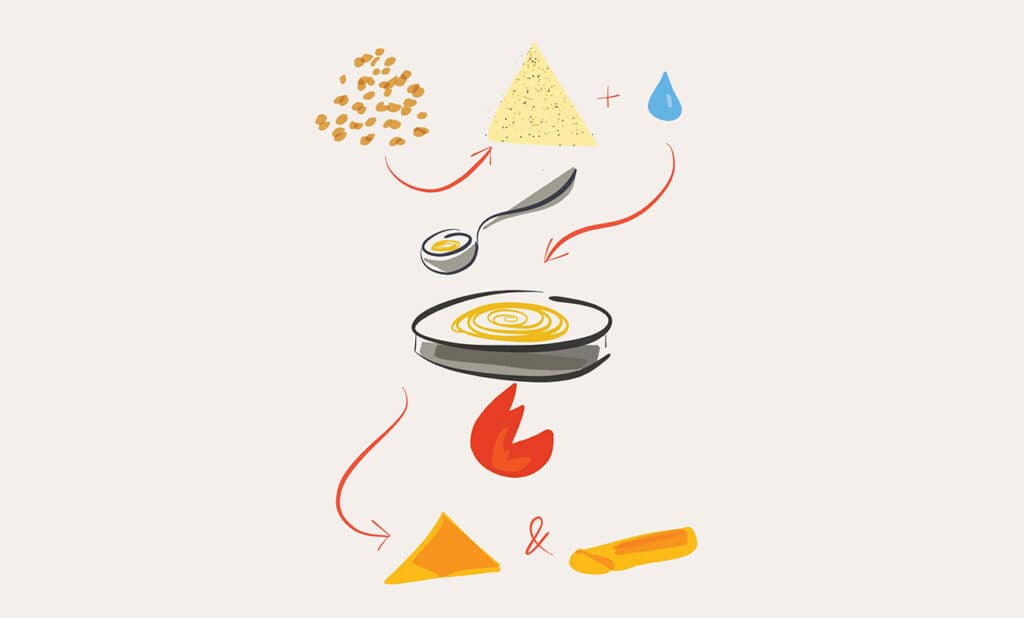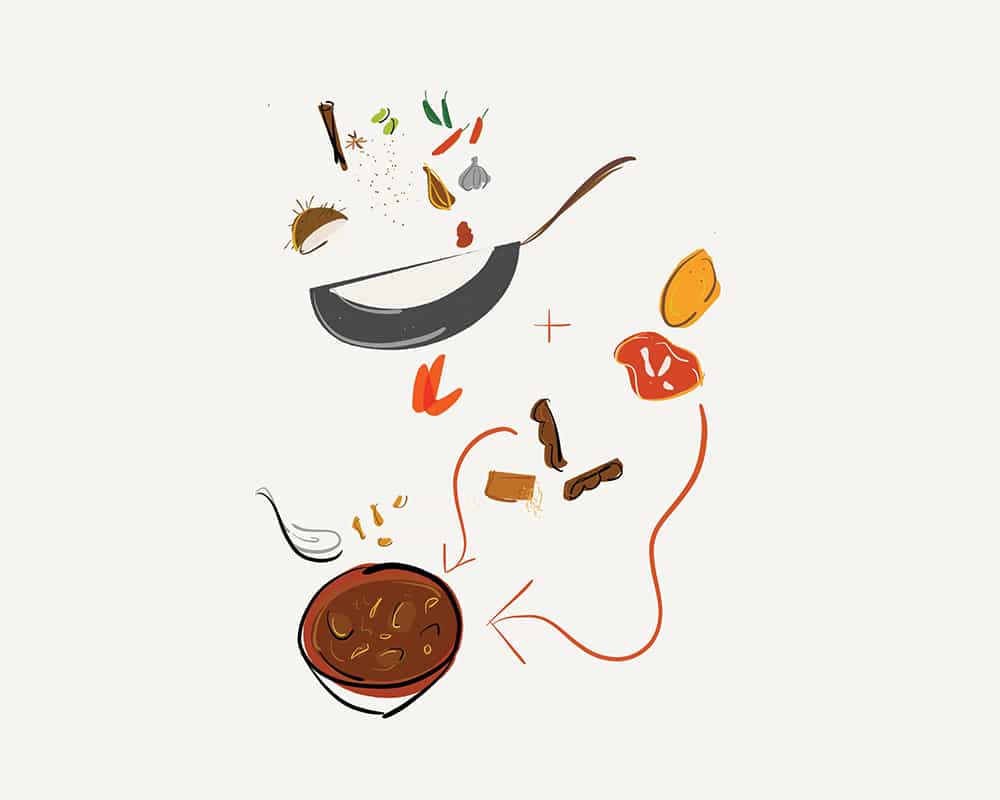A dish dissected: dosa
With help from Gaurav of Horn OK Please, Sue Quinn breaks down the making of a staple south Indian snack


“JUST AS TOAST IS OUR GO-TO SNACKAGE IN THE UK, IN SOUTHERN INDIA DOSAS ARE DEVOURED WHENEVER HUNGER STRIKES”
Illustration: Ed Smith
Cooking a dosa is a masterclass in the transformation of humble ingredients into culinary catnip. Ground lentils and rice are stirred together with water to make a batter, left to ferment, then fried into pancakes. Crisp on the outside and vaguely spongy within (all the better for soaking up flavour), it is unsurprising that the dosa ranks among southern India’s culinary treasures.
Just as toast is our go-to snackage in the UK, dosas are considered a breakfast favourite in parts of India but in practice, they are generally devoured whenever hunger strikes. Comforting and filling, the batter can be made from a slew of ingredients that yield different textures, colours and flavours. Often, they’re wrapped around spiced mashed vegetables to make a divine edible pillow, then accessorised with chutney and perhaps a wet and soupy sambar for dunking.
“In all southern Indian kitchens dosas are really important,” says Gaurav Gautam, director of Borough Market Kitchen’s Horn OK Please stand, which fries, folds and fills hundreds of dosas for ravenous customers each week. “A lot of people will keep a jug of dosa batter ready in the fridge so it’s ready to go when they’re hungry.”
Dosas are commonly made with rice and urad lentils, sometimes scented with fenugreek. But, really, dosas aren’t about sticking to a single set of rules. Rava dosas are made with semolina and rice, imbued with cumin, ginger, asafoetida and nuts. Nariyal dosas come with coconut chutney, while a love-in of flour, rice flour, coconut, jaggery and sometimes cardamom give rise to jaggery dosas.
At Horn OK Please, Gaurav’s dosa dishes are a pan-India amalgam. The dosas themselves are made with moong beans and – no fermentation required! – mixed with rice flour and a little turmeric to make a thick and brightly hued batter, a specialty of Andhra Pradesh in south-eastern India. Potato is a common dosa filling, but Gaurav honours a family recipe from northern India that involves cooking red and white potatoes low and slow, then spiking them with tangy dried mango powder. Served with chana chaat, a spiced chickpea stew, the whole thing is garlanded with date and tamarind chutney and pomegranate seeds. A national treasure indeed.
Urad lentils and rice
Dosas are traditionally made with urad lentils and rice, sometimes fenugreek seeds, soaked in water overnight to ferment and develop flavour. The mixture is finely ground to a paste, then enough water is added (and sometimes a little butter) to make a batter of the perfect consistency – stout enough to produce pancakes that can carry the load of a filling, but somehow airy as well.
Fat
Oil or ghee is used to grease the tawa or hotplate. The batter is spread out into a thin circle and cooked briefly until crisp, often on just one side, then folded or rolled around fillings.
Vegetables
Fillings often comprise boiled and mashed vegetables made flamboyantly flavourful with spices like curry leaves, ginger, chillies, asafoetida and turmeric.
Chutneys
Rowdy accompaniments convey an extra layer of deliciousness. Chutneys might be of a coriander, coconut, mint or mango inclination. Many dosa devotees claim that sambar – a hot and spicy soupy dish spiked with tamarind – is also obligatory.

